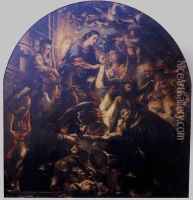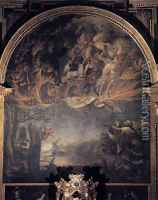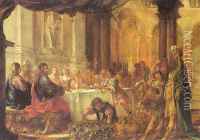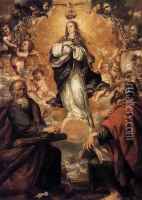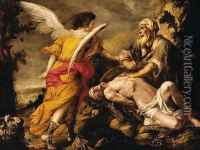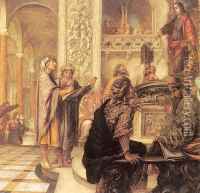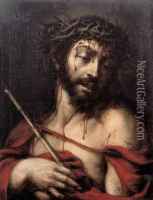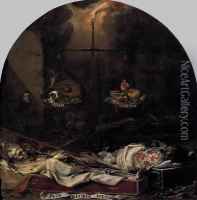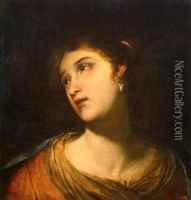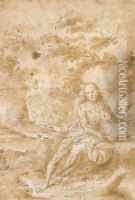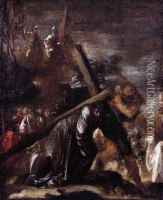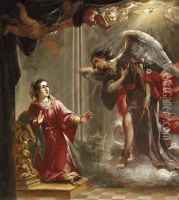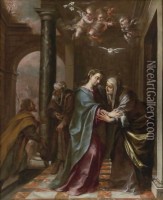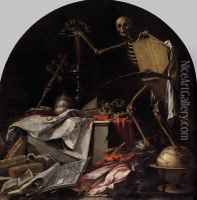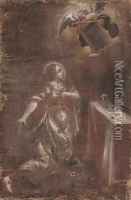Juan De Valdes Leal Paintings
Juan de Valdés Leal was a Spanish painter and etcher of the Baroque era, noted for his dramatic, inventive, and often morbidly themed works. Born on May 4, 1622, in Seville, Spain, Valdés Leal became one of the leading figures in the Sevillian school of painting, alongside contemporaries such as Murillo and Zurbarán. He was a versatile artist, not only engaging in painting but also producing significant work in etching and sculpture. His early work was influenced by Zurbarán and the naturalism of the Sevillian school, but he later developed a more personal style characterized by vivid colors and dynamic compositions.
Valdés Leal's work often reflected the Counter-Reformation themes prevalent in Spain during his lifetime, with an emphasis on mortality and the transience of life. One of his most famous series is 'In Ictu Oculi' and 'Finis Gloriae Mundi', housed in the Hospital de la Caridad in Seville. These paintings are particularly known for their depiction of the vanity of earthly life and the inevitability of death.
Despite his preoccupation with these somber themes, Valdés Leal's work was also capable of great beauty and tenderness, as seen in his religious commissions for various churches and cathedrals. His skill in handling complex compositions and his use of dramatic lighting effects were much admired and influential.
Valdés Leal was married to the painter Isabella Carasquilla, and they had children who also became artists. His influence extended beyond his immediate circle, as his dramatic style influenced the development of Baroque art in Spain and beyond. Valdés Leal died on October 15, 1690, in Seville, leaving behind a potent legacy in Spanish art history.
